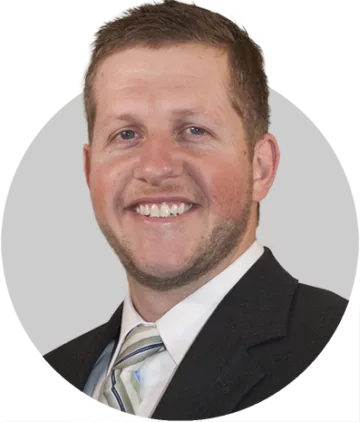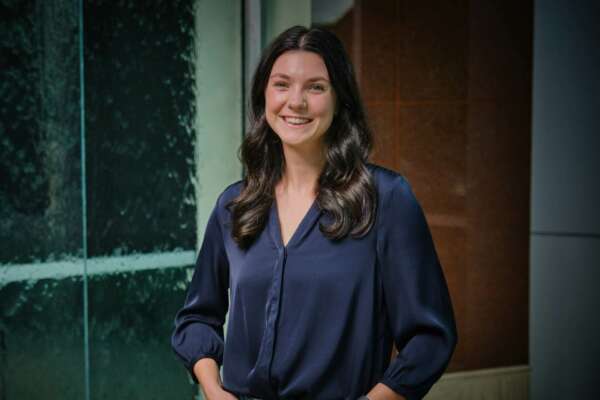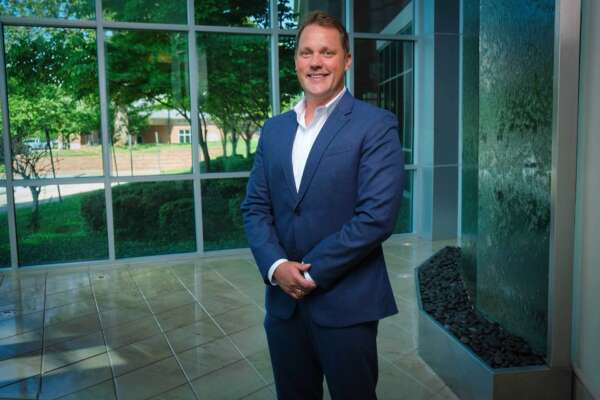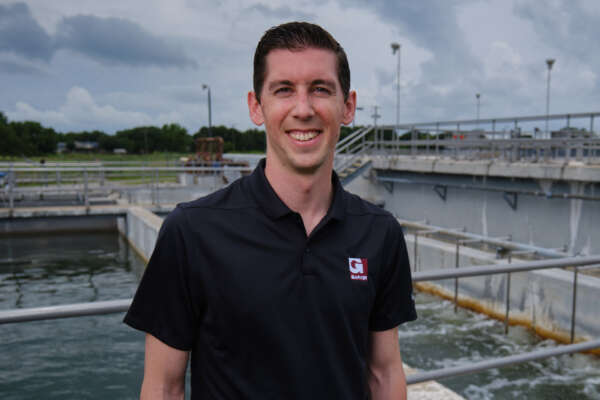Garver helped the City of Sherman capitalize on reverse osmosis to extend capacity and stay ahead of PFAS regulations
The City of Sherman, in partnership with Garver, found that reverse osmosis was the solution for plant expansion, and it is a best available technology for PFAS removal, putting them ahead of regulations.
Project Highlights
Garver assisted with the procurement of a landmark $300 million SWIFT grant.
- Garver is piloting alternative preoxidants and disinfectants to extend membrane life, increasing the cost-effectiveness of this best available technology for PFAS removal.
Garver’s design will increase the proportion of flow that can be treated by RO to help with future water quality issues like PFAS.
Sixty miles north of Dallas and bordering Lake Texoma is the City of Sherman, Texas (the City), the largest city in the Texoma region with 36,000 residents. The City is experiencing rapid population growth due to multiple large semiconductor industries expanding in the region.
When the City told Garver they needed to expand their water treatment plant (WTP) to meet their growth demands, Garver was already familiar with their water system, having assessed their water quality and designed improvements at several water facilities. Garver quickly got to work and provided two design packages to increase the WTP’s capacity from 20 MGD to 30 MGD.
Garver’s design addressed the challenge of merging a new treatment system with the existing one, maintaining two process trains onsite, as the City wanted to keep their existing electrodialysis reversal (EDR) process train while expanding the ultrafiltration (UF) and reverse osmosis (RO) process train.
The first design package added UF and RO units, increasing the plant’s production capacity by 5 MGD. This package also included pump replacement, piping modifications, and electrical improvements.
The second design package involved a new membrane building sized to house membrane equipment with a production capacity of 30 MGD. Initially, 5 MGD of production capacity will be installed, and Garver developed a plant-wide master plan to help meet the City’s goals for the next few decades. As part of this study, Garver conducted process, mechanical, electrical, and structural assessments of the existing plant to determine what facilities can be depended upon for future production. This included developing a phased plan for increasing capacity. Due to the design of the membrane plant, there was flexibility to scale plant capacity based on the expansion timeframes.
Addressing PFAS concerns using membrane technology
The evaluation didn’t end there. With concern over upcoming per- and polyfluoroalkyl substances (PFAS) regulations, the City asked Garver to evaluate their PFAS plan and source water characterization. Garver’s evaluation found traces of PFAS in their source water that were successfully removed within the WTP. This performance was expected since RO is a best available technology for PFAS removal.
Additionally,
the City moved forward with Garver’s plan because RO excels in removing salt
and total organic carbon (TOC) components, and it prepared the City for
upcoming PFAS regulations.
"The folks at the City of Sherman are big picture thinkers. They asked us to plan out space within the building to meet 2050 water treatment demands. We provided flexibility so we can implement more RO treatment if they need it to remove PFAS or other CECs in the future."
Lance Klement, PE
North Texas Water Team Leader
“The folks at the City of Sherman are big picture thinkers. They asked us to plan out space within the building to meet 2050 water treatment demands. We provided flexibility so we can implement more RO treatment if they need it to remove PFAS or other CECs in the future,” said Garver North Texas Water Team Leader Lance Klement, PE, who is leading the project.
Merging old and new treatment systems to gain value from existing resources with PFAS goals in mind
Expanding and improving the City’s WTP was a unique challenge due to the amount of salt in their water. In the 1990s, the City implemented EDR for their surface water. At the time, EDR was the only technology that could handle the treatment challenges, including the very high seasonal algae and sediment that make surface water in Texas particularly hard to desalinate. To help control costs, Garver worked with the City to keep the original system active and incorporate it into the overall plant design while the City transitions to the new UF/RO treatment process.
Given the history of the working relationship between Garver and the City of Sherman, their goals were aligned. “From our early discussions on water quality, we knew it was important to look at how the whole distribution system worked. We knew they wanted a holistic approach,” said Klement.
Keeping the EDR system active also means that the City will need flexibility to treat different amounts of water with RO and UF to help offset the quality of water from that system. Garver also provided additional RO flexibility, which could help the City gain more PFAS removal should regulations become more stringent in the future.
Garver’s study showed that once all the water was treated by UF, only 50% needed to be treated by RO without the treated water from EDR. However, Garver had the forethought to expand the blend rate to allow 60% of the water to be treated by RO instead of just 50%, providing additional flexibility and better water quality for the public at times when the EDR system is in service.
“The City of Sherman has really embraced our staff. We’ve collaborated with them to make sure their voices are heard and that their input is incorporated into the project and that they are part of the team."
Buddy Boysen, PE, PMP
Technical Lead and Design Phase Manager
“The City of Sherman has really embraced our staff. We’ve collaborated with them to make sure their voices are heard and that their input is incorporated into the project and that they are part of the team. They wanted to be involved, and we welcomed their involvement. The effort on both sides has made a special team,” said project Technical Lead and Design Phase Manager Buddy Boysen, PE, PMP.
Assisting with significant funding initiatives
Beyond design and construction support, Garver assisted the City with applying for the State Water Implementation Fund of Texas (SWIFT) for an award sum of $300 million.
Using pilot testing to identify methods that extend the useful life of membranes
With future planning in mind, Garver is currently assisting the City with piloting to extend the life of the membranes through alternative preoxidation and disinfection chemicals. They collaborated with the Texas Commission on Environmental Quality (TCEQ) to develop the testing plan. Initially, TCEQ responded to Garver’s pilot plan submission with clarification questions about the innovative process.
To help clarify the expected performance, Garver conducted additional testing in the City’s lab to confirm that the theoretical models agreed with performance in the actual water and with treatment chemicals that the City would be using during the pilot. Once approved and conducted, the pilot-tested approach will be incorporated into the final design.









Share this article